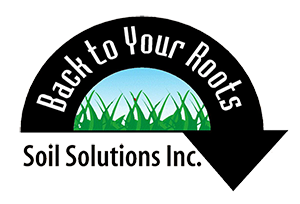Kirnbauernhof
We are Katrin and Hansi Diwold and since 2015 officially the young generation at the Kirnbauernhof in beautiful Wachsreith.
The Kirnbauernhof has been in the family for a long time. Where does the name Kirnbauer come from? We can only guess, but probably from the former dairy farming. Until 1995, the Kirnbauernhof was a typical Mühlviertel mixed farm. In addition to dairy farming with its own rearing and cattle fattening, pigs were fattened and over 100 chickens were kept. Then in 1995, Hansi's older brother was diagnosed with bovine dust allergy. His parents therefore decided to switch to pig fattening and invested in new stables, which were gradually renovated and expanded. Today we farm about 44 hectares of arable land, cultivating corn, wheat and barley as feed for the pigs. To complete the crop rotation, sugar beet and soybean are added.
At Kirnbauernhof, we currently have space for 675 fattening pigs, with 260 fattening places still accounted for by the old full- and partial-slat system and 338 fattening places in the outdoor climate animal welfare barn we built in 2019 and 70 fattening places located in mobile tent housing since December 2021. We do not have our own pig farm. Our piglets all come from the same breeder. Our brother-in-law Paul Dorninger, whose farm is about 3 km away, is our reliable partner here.
After completing his education at the HBLA St. Florian, Hansi threw himself into farming with enthusiasm and began to plan and implement his ideas and visions bit by bit. With every implemented idea comes at least one new one!
The following, for us important key points, we would like to explain to you in more detail:
- Closed loops
Closed loop, this means first and foremost the return of the extracted nutrients to the soil. With each harvest, the nutrients that the plant has absorbed through the soil are transported away from the field. To keep the soil fit, the nutrients must be returned in some way. This works best with farm manure, in our case with slurry and manure. Through this train of thought was clear to us. We run our agriculture with animal husbandry and not only as pure arable farming.
- Animal husbandry
We quickly decided what kind of animal husbandry we would do in the future: cows were out of the question because of our brother's allergy to cattle dust, poultry fattening did not give us enough room for maneuver, and we postponed niches like insects until later., so we decided on pig farming, where we already had a lot of experience. After this decision, it was clear to us that we would invest here.The previously common full and partial split approach is no longer accepted by the population and will sooner or later also no longer be possible by law. Therefore, after many barn inspections, consultations and other information, we decided to deviate from the standard way and build an outdoor climate animal welfare barn. Construction starts in 2019, first occupancy in February 2020, and we are still thrilled. The adage "If the animal is doing well, the farmer is doing well." is completely true here.
- Regenerative/regenerative agriculture
At this point, we regularly ask ourselves the question: In what condition do we want to hand over our most valuable possession as farmers, the soil, to our children? Hansi has always learned during his training: The earthworm is the farmer's most important partner! So why do we tillage and cultivate the soil, sometimes intensively, if this harms the earthworm and its colleagues, the billions of other soil inhabitants? Why do we seem to need more and more chemical fertilizers and pesticides? Through these considerations, we have come across regenerative agriculture, it deals with soil life, soil structure and how to make the soil fitter again with the help of compost and less to no tillage. In this way, we not only save costs, but also actively participate in climate protection at the same time. Our pig farming also fits perfectly into this system! We further refine our manure into high-quality compost and then spread it on our farmland.
Since the summer of 2020, a new, valuable contact with a group of people has arisen through a barn and compost tour. For this group, soil and the promotion of healthy soil microbiology are a key issue in the agriculture of the future! A lot of new information in the field of soil microbiology, combined with our own findings and practical experience reports from long-term practitioners, result in new production methods for us and opportunities in agriculture.
In the meantime, we no longer see agriculture and animal husbandry as separate areas, but have understood that for example, the pigs in the tent are ideal for making compost thereby improving the soil biology of our fields and ultimately making them healthy and diverse food and feedstuffs can be harvested. In the future we will look at our company even more as a whole system and try to promote even more with all possible adjustment screws of the system!
- Knowledge Sharing
We both believe that knowledge and experience gained should not be kept secret, but shared with others. That's why you can come by at any time, ask questions, exchange experiences or just be curious! With registration there is also a stable tour and later discussion with the farmer Hansi!
Stay in the Loop!
